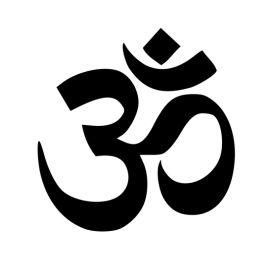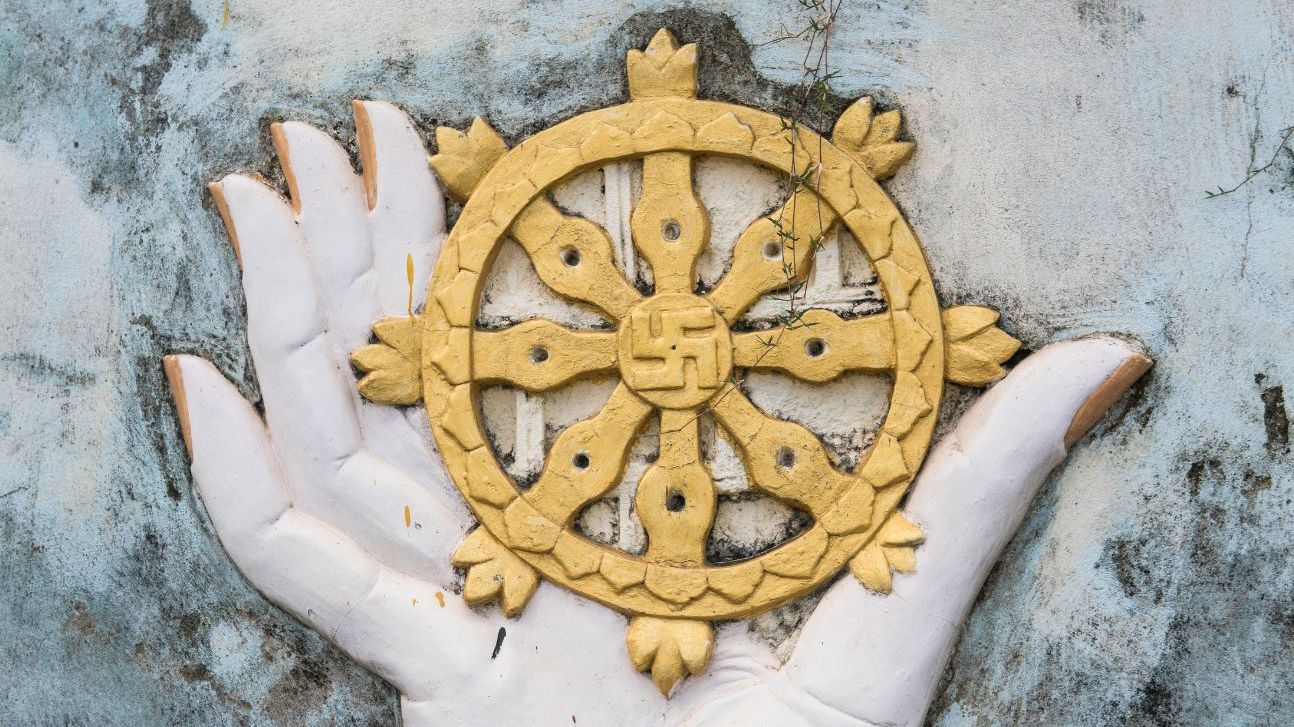When I first began my spiritual journey, I thought symbols represented religious beliefs. Very little did I know that many sacred symbols and enlightenment symbols are so much more. The deeper you go in your spiritual journey, the more you will see how many of these ancient symbols have the power to help you heal and grow.
In this blog, I share with you symbols of enlightenment and the sacred spiritual signs of different cultures. You have seen some of these before and never realized the depth of their meaning. The swastika is a beautiful example of how purity and goodness can be lost when symbols are mis-used. I hope that this article can help you understand how these sacred symbols hold deep meaning that can actually help illuminate your journey toward spiritual growth and understanding.
A journey to enlightenment
Enlightenment is all about gaining wisdom and a clear understanding, which helps you see things more clearly. It’s not about perfectionism or even getting rid of all the things about yourself that you have deemed “bad.”
Enlightenment is the process of lifting the veil of illusion, allowing us to see beyond the limitations of the thinking mind. As we grow more enlightened, we learn to move in harmony with spirit, connecting with our higher selves in the spiritual dimension. This connection guides us toward deeper truths—truths that transcend the narrow perspective of our limited human lens.
As you study on your journey to enlightenment, you begin to come across many sacred spiritual symbols that have long been used to represent this profound state of awakening.
Symbols have always played an important role in spiritual practices. In this piece, I will focus on symbols that are predominantly from Eastern religions yet you will see some other symbols mixed in. Many of these symbols are visual representations that convey deep meanings and truths about the universe, our lives, and our journey toward enlightenment.
If I had written this blog a few years ago, I wouldn’t have been able to fully do it justice. Even now, as I update it, I realize my understanding is still evolving. The depth and power of symbols seem almost infinite. While I once thought I understood the importance of enlightenment symbols, it’s only in the past year that I’ve truly begun to grasp just how transformative they can be.
Along my journey, spiritual symbols have taken on an entirely new meaning. Where I used to see an image, I now see the beauty of a story, idea, or concept brought to life through visualization. I hope that by sharing the deep spiritual meaning of these sacred symbols, you can find the same appreciation.
Exploring the Profound Realm of Sacred Symbols and Spiritual Signs

1. OM or Aum: The Primordial Sound
I love starting this list with the OM symbol–It is often described as the primordial sound of the universe. This sacred symbol is said to encapsulate the essence of creation, preservation, and dissolution, symbolizing the eternal cycle of life. If you haven’t before, I highly recommend watching a YouTube video of how to pronounce this symbol. The resonance of OM is said to reverberate through the cosmos, uniting all beings in a harmonious symphony of existence.
OM in Hindu and Buddhist Traditions
In Hinduism, OM represents the cosmic sound that gave birth to the universe, embodying the divine presence within all creation. Perhaps, it’s the sound of God. It is chanted during meditation and spiritual practices to align with the cosmic vibrations and attain spiritual unity.
In Buddhism, OM symbolizes the union of body, speech, and mind, leading practitioners towards enlightenment and awakening. The rhythmic chanting of OM brings peace, clarity, and spiritual elevation. Chanting OM while visualizing the symbol during your meditation practice is a beautiful way to begin to bring sacred symbols into your spiritual practice.

2. Ensō: Emptiness and Enlightenment
In Zen Buddhism, the Ensō symbolizes enlightenment, strength, elegance, and the universe’s emptiness. Its simple yet profound circle reflects the concept of the “no-mind” state, where thoughts dissolve, and pure awareness emerges.
The Art of Ensō Creation
The process of creating an Ensō is a meditative practice in itself. Zen monks and artists paint the circle in a single brushstroke, embodying spontaneity, imperfection, and the beauty of the present moment. Each Ensō is unique, capturing the essence of the artist’s inner state and spiritual journey.

3. The Endless Knot: Interconnectedness and Unity
Found in various cultures and spiritual traditions, the Endless Knot symbolizes the interconnectedness of all phenomena. Its intertwined patterns reflect the eternal cycle of life, death, and rebirth, as well as the inseparable union of wisdom and compassion. You will see this concept mirrored in several of the symbols on this list. Can you see how many spiritual faiths have overlapping ideologies?
Meaningful Interpretations of the Endless Knot
In Buddhism, the Endless Knot signifies the interdependence of cause and effect, karma, and the interconnected nature of existence. It reminds practitioners of their interconnectedness with all beings and the universal law of interdependence. The mandala (shown below) also has a very similar meaning, showing the interconnected of things.

4. The Unalome: Path to Enlightenment
The Unalome is one of my favorite spiritual symbols. While the image here gives you a general idea of what a Unalome looks like, a quick Google search will reveal countless variations. Each version carries its own unique interpretation, yet all share the essence of this powerful symbol. Originating from Buddhism, the Unalome symbolizes the path to enlightenment and spiritual awakening.
Its spiraling twists represent the many ups and downs we experience on the journey of life before reaching the clarity and wisdom of enlightenment.
The Unalome’s Journey of Transformation
The Unalome’s unique design mirrors the seeker’s journey of self-discovery, overcoming obstacles, and attaining higher states of consciousness. It embodies the cyclical nature of growth, learning, and spiritual evolution.
The Unalome beautifully illustrates that the path to enlightenment is far from straightforward. Growth is not a linear process; it’s filled with moments of progress, setbacks, confusion, and breakthroughs. Each twist and turn signifies the lessons we learn, the challenges we overcome, and the wisdom we gain along the way. This symbol serves as a reminder that every step—no matter how difficult or unexpected—is a vital part of our spiritual evolution.

5. The Celtic Knot: Eternal Interconnectedness
With its intricate interwoven patterns, the Celtic Knot is a profound symbol of the eternal cycle of life, death, and rebirth. Its endless loops reflect the interconnectedness of all existence, serving as a reminder that every aspect of life is woven together in a harmonious, unbroken flow. The timeless nature of spiritual wisdom is captured within these designs, representing the idea that truth, growth, and transformation transcend time and space. The Celtic Knot also symbolizes the unity of body, mind, and spirit, encouraging us to find balance and connection in our own lives.
Exploring Celtic Knot Variations
Celtic Knots come in a stunning variety of designs, each with its own unique symbolism and significance. For instance, the triskele, with its three interwoven spirals, is often associated with concepts like life, death, and rebirth or the unity of land, sea, and sky. The quadrifoil, on the other hand, often represents the four elements, seasons, or directions, emphasizing the balance and harmony within the natural world.

6. The Third Eye: Inner Vision and Intuition
The Third Eye, often represented as a powerful spiritual symbol, embodies the concepts of inner vision, heightened intuition, and profound spiritual insight. Located between the eyebrows, it is considered the seat of wisdom and the portal to realms beyond the physical senses. This symbol signifies the awakening of higher consciousness, enabling us to perceive the subtle energies and truths that are not immediately visible in the material world. It is a reminder of our innate ability to access deeper understanding and connect with the divine essence within and around us.
Awakening the Third Eye
In spiritual practices like yoga, meditation, and breathwork, the activation of the Third Eye chakra, or Ajna, is often a central focus. This energy center is associated with the ability to see beyond the ordinary and tap into our intuitive power. Awakening the Third Eye is believed to heighten our capacity for spiritual clarity, allowing us to discern truth from illusion and connect with higher dimensions of awareness.

7. Swastika: Ancient Symbol of Auspiciousness
Despite its controversial history, the Swastika originally symbolized auspiciousness, prosperity, and good fortune in many ancient cultures. Its sacred meaning transcends cultural misinterpretations, representing the eternal cycles of life, creation, and spiritual evolution.
Reclaiming the Swastika’s Sacredness
In Hinduism, Buddhism and other ancient traditions, the Swastika is seen as a symbol of blessings, positive energy, and cosmic harmony. It is often associated with the sun, representing life-giving energy and the cyclical nature of existence.
Reclaiming the Swastika’s sacredness involves understanding its original spiritual significance and separating it from its negative connotations in recent history.

8. Hamsa Hand: Protection and Divine Blessings
The Hamsa Hand, a timeless symbol found in many cultures and spiritual traditions, carries deep meanings of protection, blessings, and good fortune. Its open palm is believed to act as a shield, warding off negative energies and harmful intentions.
The eye often depicted in the center of the palm amplifies its spiritual power, symbolizing divine awareness, intuition, and the ability to perceive hidden truths. Together, the hand and eye create a powerful emblem of safety and divine guidance, offering comfort and reassurance to those who use it.
The Universal Symbolism of the Hamsa Hand
The Hamsa Hand transcends cultural and religious boundaries, embodying universal themes of protection, abundance, and spiritual grace. In many traditions, it is regarded as a sacred talisman, thought to bring blessings and safeguard against misfortune. Whether displayed in homes, worn as jewelry, or carried as an amulet, the Hamsa serves as a reminder of the divine presence that watches over and supports us.

9. Eye of Horus: Ancient Egyptian
The Eye of Horus, an ancient Egyptian symbol, represents protection, healing, and divine guidance. It reflects the wisdom and spiritual insights of ancient civilizations, offering a glimpse into their understanding of cosmic forces.
The Eye of Horus in Mythology
In Egyptian mythology, the Eye of Horus symbolizes the eye of the falcon god Horus, representing clarity, protection, and royal power. It is associated with healing and restoration, offering solace to those in need.

10. Yin and Yang: Balance and Harmony
Yin and Yang, a fundamental concept in Eastern philosophy, symbolize the balance of opposites and the interconnectedness of dualities. The interplay of yin (feminine, receptive) and yang (masculine, active) energies creates harmony, equilibrium, and cosmic unity.
Embracing Yin and Yang Energies
By understanding and harmonizing yin and yang energies within ourselves, we cultivate balance, wholeness, and holistic well-being. The Yin-Yang symbol reminds us of the dynamic interplay of forces in the universe and the need for harmony in all aspects of life.

11. Ankh: Symbol of Life and Immortality
The Ankh, one of the most iconic symbols of ancient Egypt, represents life, immortality, and divine blessings. Its distinctive looped shape resembles a key, symbolizing the unlocking of the mysteries of existence and the eternal cycle of birth, death, and rebirth. Often referred to as the “Key of Life,” the Ankh served as a powerful reminder of humanity’s connection to the divine and the unending flow of energy that sustains all life.
Spiritual Significance of the Ankh
In Egyptian spirituality, the Ankh embodies the divine life force that flows through all living beings, signifying regeneration and the eternal nature of the soul. This sacred symbol represents the pursuit of spiritual immortality and the ongoing cycle of growth, death, and rebirth that defines the human experience. As a tool of transformation, the Ankh inspires the journey of self-discovery and the quest for higher spiritual understanding, connecting the physical and spiritual realms.

12. Star and Crescent: Symbol of Divine Guidance
In Islamic symbolism, the Star and Crescent represent divine guidance, enlightenment, and the celestial realms. They guide believers towards spiritual illumination and the pursuit of inner peace and harmony.
The Star and Crescent in Islamic Culture
The Star and Crescent have been used as symbols of Islam for centuries, embodying the faith’s core values of unity, faith, and submission to the divine will. They inspire believers to seek spiritual enlightenment and live in accordance with divine teachings.

13. Tree of Life: Interconnectedness and Growth
The Tree of Life, revered across numerous spiritual traditions, symbolizes the deep interconnectedness of all existence, as well as the growth and renewal inherent in the eternal cycle of life. Its roots anchor deeply in the earth, drawing strength and nourishment, while its branches stretch toward the heavens, symbolizing the union between the physical and the spiritual. This powerful image reminds us of our place within the web of life and the harmony that exists between creation and sustenance.
Sacred Symbolism of the Tree of Life
The Tree of Life serves as a profound representation of spiritual nourishment, wisdom, and the ongoing journey of evolution. Its branches signify the many paths one can take on the quest for spiritual growth, each leading to unique insights and understanding. Meanwhile, its fruits symbolize the rewards of dedication to spiritual practice and self-realization, offering sustenance not only to the individual but also to the collective. This sacred symbol invites us to embrace our personal journey while remaining connected to the greater whole.

14. Labyrinth: Journey of Self-Discovery
A symbol of spiritual journey and self-discovery, the Labyrinth represents the twists and turns of life’s path towards inner enlightenment. Walking the Labyrinth is a meditative practice that encourages introspection, mindfulness, and inner peace.
The Labyrinth as a Metaphor for Life
Navigating the Labyrinth mirrors the challenges and revelations of life’s journey. It invites us to embrace uncertainty, trust the process, and find clarity and purpose amidst life’s complexities.

15. Pentacle: Elemental Harmony and Balance
In Pagan and Wiccan traditions, the Pentacle serves as a powerful symbol of elemental harmony, representing the five sacred elements: earth, air, fire, water, and spirit. This iconic star within a circle reflects the interconnectedness of the natural world and encourages holistic balance in all aspects of life. The Pentacle is a reminder of the wisdom found in aligning with these elemental forces, fostering a deep spiritual connection to the world around us. Read more about common misconceptions about Esoteric & Occult Practices.
The Five Points of the Pentacle
Each point of the Pentacle corresponds to one of the elements, symbolizing the integration of their unique energies and guiding practitioners in their spiritual journey. This sacred design encourages reverence for nature, promoting ecological awareness and a sense of stewardship toward the Earth. By honoring these elemental forces, the Pentacle inspires a harmonious relationship with the natural world and a greater understanding of our role within it.

16. Sri Yantra: Cosmic Balance and Divine Union
A powerful symbol in Hinduism, the Sri Yantra embodies cosmic balance, divine union, and the manifestation of spiritual intentions and abundance. Its intricate geometry reflects the interconnectedness of the universe and the harmonious interplay of cosmic energies.
The Sacred Geometry of the Sri Yantra
The Sri Yantra’s geometric precision symbolizes the order and harmony underlying creation. Meditating on the Sri Yantra activates spiritual energies, aligns consciousness with cosmic principles, and fosters prosperity and spiritual fulfillment.

17. Mandala: Wholeness and Unity
Intricate and beautifully symmetrical, Mandalas are timeless symbols of wholeness, unity, and the interconnectedness of all aspects of life. These sacred geometric designs invite a sense of harmony and balance, serving as tools for meditation and spiritual growth. By contemplating a Mandala, we are drawn into its mesmerizing patterns, encouraging us to explore the depths of our inner worlds and connect with the universal flow of energy.
Mandalas as Spiritual Gateways
Mandalas act as spiritual gateways, guiding us on a journey of self-discovery and connection with the cosmos. Whether creating or meditating on these intricate patterns, they help unlock creative expression, deepen introspection, and align us with universal wisdom. Representing the microcosm within the macrocosm, Mandalas bridge our inner and outer realities, offering a profound reminder of the interconnected nature of existence and the infinite possibilities within us.

18. Lotus Flower: Symbol of Spiritual Growth and Transformation
The Lotus Flower holds deep symbolism in various spiritual traditions, representing purity, enlightenment, and spiritual rebirth. Its journey from the murky depths of muddy waters to blossoming beauty above the surface mirrors the path of spiritual awakening and growth.
The Lotus in Buddhist Symbolism
In Buddhism, the Lotus symbolizes the journey from ignorance to enlightenment, just as the Buddha rose above the challenges of existence to attain nirvana. Siddhartha Gautama, the historical Buddha, often used the Lotus as a metaphor for the human potential to transcend suffering and realize Buddha nature.
Common Symbols in Buddhist Studies

19. Wheel of Dharma: Symbol of Teachings and Spiritual Guidance
The Wheel of Dharma, also known as the Dharmachakra, symbolizes the teachings of the Buddha and the path to liberation. Its eight spokes represent the Noble Eightfold Path, guiding practitioners towards enlightenment and freedom from suffering.
Buddhist monks often meditate on the symbolism of the Dharmachakra, or Wheel of the Law, as it represents the teachings of the Buddha and guides them on the path to enlightenment.
Eightfold Path and the Wheel of Dharma
The Eightfold Path, a core teaching of Buddhism, encompasses right understanding, intention, speech, action, livelihood, effort, mindfulness, and concentration. By following this path, individuals cultivate wisdom, ethical conduct, and mental discipline, leading to spiritual growth and liberation.

20. Golden Fish: Symbol of Spiritual Fortune and Abundance
In Buddhist iconography, the Golden Fish symbolizes auspiciousness, prosperity, and spiritual fortune. They swim freely in the ocean of enlightenment, representing the boundless potential for growth and abundance on the spiritual path.
The Golden Fish in Buddhist Teachings
The symbolism of the Golden Fish is intertwined with the teachings of the Buddha, inspiring practitioners to navigate life’s waters with grace, wisdom, and compassion. They remind us of the wealth found in spiritual virtues and the treasures of inner peace and contentment.

21. The Tibetan Parasol: Symbol of Protection
In Tibetan Buddhism, the Parasol symbolizes spiritual protection and the umbrella of the Dharma. Its canopy shields practitioners from distractions, negativities, and worldly temptations, allowing them to focus on their spiritual paths with clarity and devotion.
The Sacred Canopy of the Parasol
The Parasol’s canopy, often adorned with intricate designs and sacred symbols, represents the vast expanse of wisdom and compassion that shelters all beings. It reminds us of the refuge found in spiritual teachings and the guidance of enlightened masters.

22. The Victory Banner: Triumph over Obstacles
The Victory Banner is a symbol of triumph over obstacles, ignorance, and inner challenges on the spiritual path. It represents the victory of wisdom, compassion, and virtuous qualities that lead to enlightenment.
Unveiling the Victory Banner’s Symbolism
In Buddhist art and symbolism, the Victory Banner is often depicted alongside other auspicious symbols, such as the Golden Fishes and the Dharma Wheel, signifying the complete victory of spiritual realization.

23. The White Conch Shell: Sacred Sound and Awakening
In Hindu and Buddhist traditions, the White Conch Shell symbolizes the sacredness of sound, spiritual awakening, and auspicious beginnings. Its deep resonance awakens spiritual awareness and heralds positive transformations.
Significance of the Conch Shell’s Sound
The sound of the Conch Shell is believed to dispel negative energies, invoke blessings, and announce sacred gatherings or teachings. It symbolizes the voice of enlightenment and the power of divine communication.

24. Bodhi Leaf: Emblem of Enlightenment and Awakening
The Bodhi Leaf, often depicted alongside the Bodhi Tree, symbolizes enlightenment, spiritual awakening, and the potential for realization of Buddha nature within all beings. It represents the transformative power of insight and inner wisdom.
Buddha Nature and the Bodhi Leaf
Buddha nature refers to the inherent potential for enlightenment within every sentient being, regardless of external conditions or circumstances. The Bodhi Leaf serves as a reminder of this innate wisdom and the possibility of realizing one’s true nature through dedicated spiritual practice.

25. Bodhi Tree: Awakening Under the Sacred Fig Tree
The Bodhi Tree is synonymous with Siddhartha Gautama’s enlightenment, where he attained supreme wisdom and became the Buddha. This sacred tree symbolizes spiritual awakening, profound insights, and the realization of one’s true nature.
Siddhartha Gautama’s Enlightenment Under the Bodhi Tree
According to Buddhist tradition, Siddhartha Gautama meditated under the Bodhi Tree for forty-nine days, transcending worldly desires and gaining deep insights into the nature of existence. This pivotal moment marked his transformation into the Buddha, the awakened one. The Bodhi tree is one of the most popular Buddhist symbols.
And finally, two spiritual symbols that are often used as tools for prayer and meditation in Buddhism…

26. Prayer Wheels: Spinning Blessings and Mantras
Prayer Wheels, a prominent feature in Tibetan Buddhism, symbolize the continuous offering of prayers, mantras, and positive energy. As practitioners spin the wheels, they send out blessings to all beings and cultivate inner peace and spiritual merit.
The Power of Prayer Wheels
The act of spinning a Prayer Wheel is believed to multiply the benefits of prayers and mantras, spreading positivity and purifying the environment. It is a symbolic gesture of devotion, compassion, and interconnectedness with all sentient beings.

27. Tibetan Prayer Flags: Carrying Blessings on the Wind
Tibetan Prayer Flags, adorned with prayers, mantras, and sacred symbols, symbolize spreading blessings, peace, and harmony throughout the world.
When hung outdoors, they flutter in the wind, carrying prayers to the heavens and blessing all who encounter them.
Colors and Meanings of Prayer Flags
Each color on Tibetan Prayer Flags holds significance, representing elements like earth, water, fire, air, and space. The prayers and mantras inscribed on the flags invoke blessings, protection, and auspiciousness for all beings.
Exploring Symbols in Your Meditation Practice
Meditation is a central practice in Buddhism, offering a direct path to inner peace, clarity, and spiritual realization. By incorporating Buddhist symbols such as the Lotus Flower, Bodhi Tree, Golden Fish, Wheel of Dharma, and Bodhi Leaf into meditation practice, practitioners deepen their connection to spiritual teachings and cultivate mindfulness, compassion, and insight.
As you engage in meditation, visualize the Lotus Flower blooming within your heart, symbolizing purity and spiritual growth. Imagine yourself sitting under the Bodhi Tree, absorbing its profound wisdom and attaining moments of clarity and insight. Envision the Golden Fish swimming freely in the ocean of your consciousness, symbolizing abundance and spiritual fortune.
Contemplate the Wheel of Dharma, reflecting on the Noble Eightfold Path and how each aspect contributes to your spiritual development. As you meditate on the Bodhi Leaf, recognize the potential for enlightenment within yourself and embrace your Buddha nature with humility and reverence.
Incorporating these symbols into your meditation practice adds depth, meaning, and transformative power to your spiritual journey.
They serve as reminders of the timeless wisdom found in Buddhist teachings and inspire you to walk the path of awakening with courage, compassion, and inner strength.


